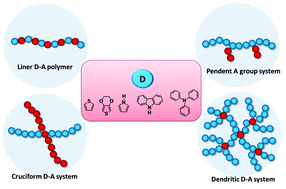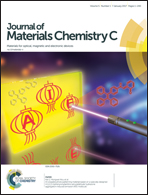Polymeric electrochromic materials with donor–acceptor structures
Abstract
Conjugated polymers with various electron-donor (D) and -acceptor (A) structures have been an important focus in the field of electrochromic (EC) research. Recent years have witnessed significant advances in the context of the design and synthesis of D–A type conjugated polymers. Most studies have investigated tunable band gap and color changes by introducing appropriate D and A units. However, D–A polymers with specific D units containing A units in the backbone or side chain possess varied ionization potentials, electron affinities and conjugation effects, leading to diverse electrochemical, optical-physical and EC properties. In addition, some innovative D–A structural polymers, such as cruciform and dendritic structures, present superior EC properties as well as multifunctional performance. In this review, our main focus will be placed on summarizing the characteristics of polymeric EC materials with various donor–acceptor structures. The overarching aim is to strengthen the understanding of the relationship between the D–A structure and the EC properties, especially color characteristics, and to provide some suggestions for the design of novel multifunctional D–A polymers for the future.

- This article is part of the themed collection: Recent Review Articles


 Please wait while we load your content...
Please wait while we load your content...